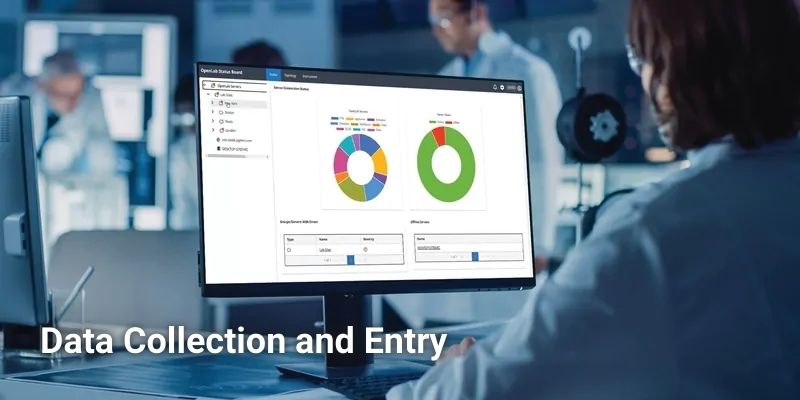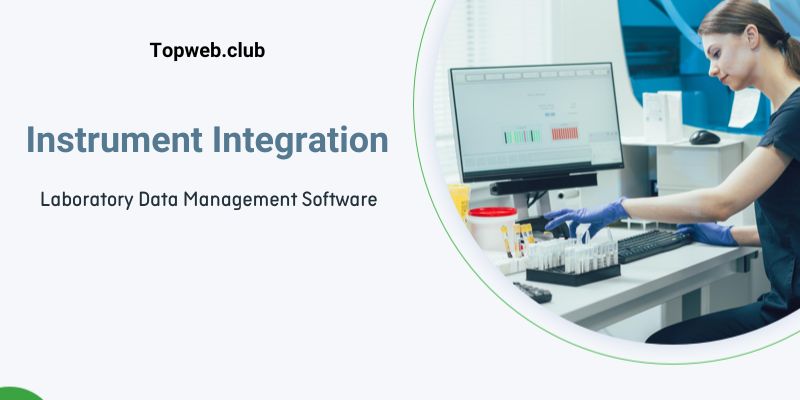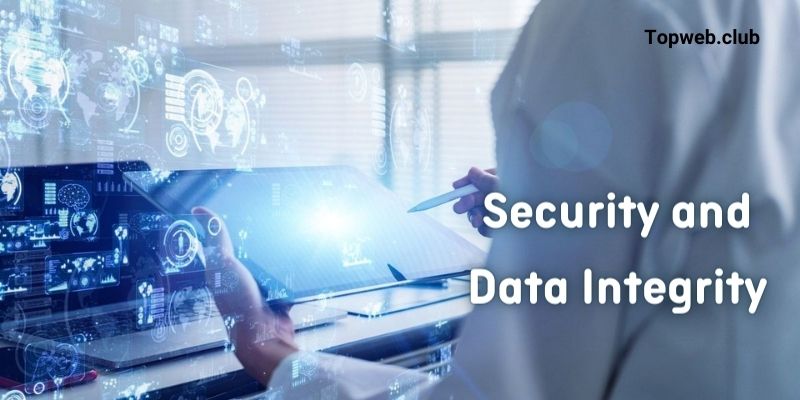In the dynamic world of scientific research and experimentation, the influx of data has become both a boon and a challenge. Laboratories generate vast amounts of data through experiments, tests, and analyses, necessitating a sophisticated approach to data management. This is where laboratory data management software (LDMS) steps in, playing a pivotal role in streamlining processes, ensuring data integrity, and facilitating collaboration. In this article, Topweb will explore the multifaceted features and functionalities of LDMS that make it an indispensable tool in modern laboratories.
1. Laboratory Data Management Software- Data Collection and Entry
At the heart of laboratory data management software is its ability to handle the intricate process of data collection and entry. In a research environment, scientists and researchers constantly generate data through various experiments and analyses. LDMS provides a centralized platform for efficiently inputting, storing, and managing this diverse range of data. This ensures that critical information is organized systematically, laying the foundation for downstream analyses and interpretations.
Laboratories dealing with complex experiments and diverse datasets benefit significantly from the structured approach LDMS provides. Researchers can input experimental results, sample details, and associated metadata into the software, creating a comprehensive and accessible repository of information.

2. Sample Tracking
One of the challenges laboratories face is the meticulous tracking of samples throughout the research lifecycle. LDMS addresses this challenge by incorporating robust sample tracking features. Laboratories dealing with numerous samples can leverage the software to assign unique identifiers, track storage locations, and maintain a detailed history of each sample.
The laboratory data management software resounds here as these systems become the linchpin for maintaining sample integrity. Researchers can easily trace the journey of each sample, from its initial introduction to the laboratory to its final analysis, ensuring transparency and accountability in the research process.
3. Instrument Integration
In the contemporary laboratory landscape, instruments and equipment play a pivotal role in data generation. The integration of laboratory data management software with these instruments is crucial for achieving seamless data transfer and enhancing overall efficiency.
LDMS acts as a bridge between laboratory instruments and researchers, facilitating automated data capture directly from the instruments. This not only minimizes the risk of human error but also accelerates the pace of research by expediting the data collection process. The repeated use of the laboratory data management software underscores its central role in ensuring the smooth integration of instruments into the research workflow.

4. Data Analysis and Visualization
While data collection is fundamental, the real value emerges during the analysis and interpretation stages. LDMS often incorporates robust data analysis and visualization tools, empowering researchers to derive meaningful insights from their datasets.
By leveraging statistical analysis, graphing capabilities, and other visualization tools, scientists can uncover patterns, trends, and correlations within their data. The laboratory data management software resonates in this context, emphasizing the software’s transformative role in turning raw data into actionable knowledge.
5. Workflow Management
Laboratories operate under rigorous protocols and workflows to maintain consistency and accuracy in their experiments. LDMS aids researchers in managing these workflows effectively. Researchers can schedule tasks, track sample preparation processes, and validate results within the software.
The repetitive use of the laboratory data management software highlights its significance as a comprehensive tool for orchestrating the intricate dance of laboratory workflows. This ensures that experiments are conducted systematically, contributing to the reproducibility and reliability of scientific findings.
6. Compliance and Regulation
In the realm of scientific research, compliance with industry regulations and standards is non-negotiable. Laboratories must adhere to specific guidelines to ensure the validity and reliability of their findings. LDMS steps in as a guardian of compliance, providing features that assist laboratories in meeting regulatory requirements.
The laboratory data management software echoes in discussions about compliance, underscoring the software’s role in safeguarding data integrity, facilitating audits, and ensuring that laboratories adhere to the highest standards of scientific rigor.
7. Security and Data Integrity
With the increasing digitization of laboratory processes, the security of sensitive data becomes paramount. LDMS incorporates robust security measures to protect against unauthorized access, data tampering, and other cybersecurity threats. Data integrity, a cornerstone of scientific research, is reinforced through features such as access controls and audit trails.
The repeated use of the laboratory data management software emphasizes the software’s commitment to securing valuable research data. Laboratories can trust LDMS to safeguard their intellectual property and maintain the confidentiality of their findings.

8. Collaboration and Sharing
Modern scientific research is often a collaborative effort, involving researchers from diverse geographical locations and disciplines. LDMS facilitates collaboration by providing a platform for seamless data sharing and teamwork. Multiple researchers can work on projects simultaneously, contributing to a collective pool of knowledge.
The laboratory data management software resonates in discussions about collaboration, underlining its role as a unifying force in the scientific community. Through shared access and collaborative features, LDMS becomes a nexus for the exchange of ideas and insights.
9. Database Management
Efficient database management is a foundational aspect of LDMS. The software organizes data in a structured manner, making it easily retrievable for future analyses or reference. This systematic approach to database management is vital for the long-term success of research initiatives.
The repeated mention of the laboratory data management software reinforces its role as a custodian of valuable data. By structuring and organizing information, LDMS ensures that researchers can navigate and retrieve data effortlessly, contributing to the continuity of scientific inquiry.
10. User Access and Permissions
Not all researchers require access to every aspect of a laboratory’s data. LDMS incorporates user access controls and permissions, ensuring that only authorized individuals can access, modify, or delete specific data. This feature is critical for maintaining data security and integrity.
The laboratory data management software becomes a beacon in discussions about user access and permissions, emphasizing the software’s commitment to providing a secure and controlled environment for data management.
Conclusion
In conclusion, laboratory data management software emerges as a linchpin in the complex tapestry of scientific research and experimentation. Through its diverse features and functionalities, LDMS addresses the unique challenges laboratories face in managing, securing, and deriving insights from their data. The repeated use of the laboratory data management software throughout this article underscores its significance as a transformative tool that not only streamlines processes within laboratories but also fosters collaboration and upholds the highest standards of scientific integrity. As laboratories continue to grapple with the deluge of data, LDMS stands as a reliable ally, guiding researchers through the intricate landscape of modern scientific inquiry.